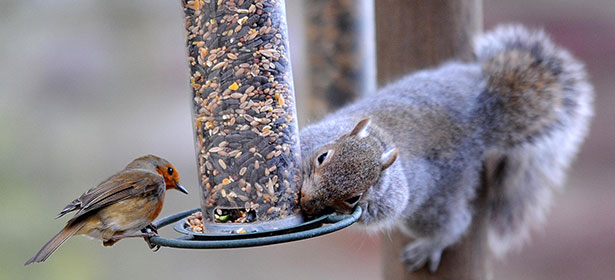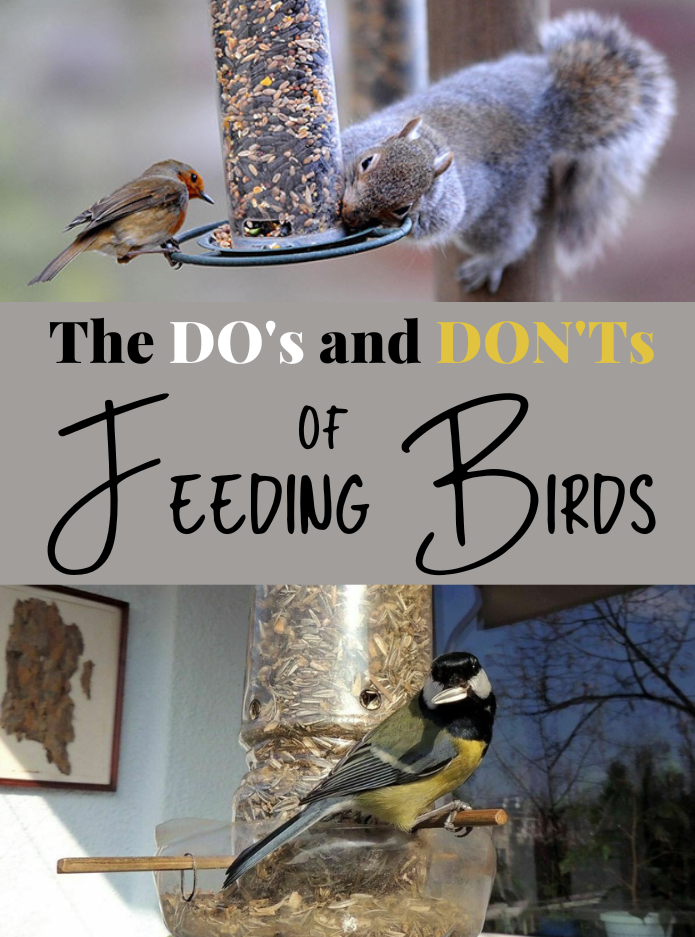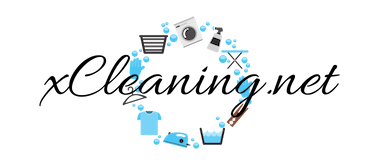Bird feeding provides enjoyment to millions of North Americans each year. When proper feeding methods are followed, both humans and birds derive benefits from feeders.
More than 40% of people in the United States regularly feed birds. Scientific studies have determined that whether intentional (bird feeders) or not (landfills or loose garbage), feeding birds increases the risk of spreading an infectious disease.
To help you in your hobby, we’ve assembled some simple and basic do’s and don’ts to steer you on the right course.
DO’s

🟢 To select a proper site for your bird feeder, choose a location that’s either less than three feet or more than 30 feet away from a window. Both help birds avoid accidental crashes.
🟢 You can buy one suet cake at a time, but it can get expensive. A better way to go is to buy in bulk. This way, you will be set for a few months. Plus, you will be saving money at the same time.
🟢 Disinfect feeders by scrubbing with a weak bleach solution (one part bleach to nine parts warm water) every few weeks, more often in summer or rainy periods. Rinse and allow feeders to dry before refilling.
🟢 No garden? No problem! Many bird feeders can be fastened directly to a window. Try installing one near where your kids eat breakfast so it feels like you’re all eating together.
🟢 If your suet does get old, it’s probably time to freshen it up. In general, suet is fine for a long time (and birds will often eat it up before it’s old), but weather can affect the quality. If you notice the birds coming to your suet and then leaving, it probably needs to be freshened.
🟢 Place the feeder near a bush or tree to give the birds a safe spot if a predator shows up.
🟢 Black-oil sunflower seed is the most widely used birdseed, popular with the greatest number of bird species. Its thin shell and large nutmeat are ideal for most feeder species.
DON’Ts

🔴 Avoid stocking your feeder with foods birds wouldn’t encounter naturally in the wild, especially if they’re processed. No crackers, crisps, raw meat, pet food, honey, or bacon fat either. Peanut butter is an exception to the rule and is generally OK to feed birds. And NO bread!
🔴 Don’t allow large amounts of seed to become wet, as on platform feeders.
🔴 Don’t put out more seed than can be eaten by the birds by nightfall, especially where raccoons, opossums, bears, deer, or rodents are a problem.
🔴 Don’t use grease, oil, petroleum jelly, or similar substances on your feeder poles or wires to thwart squirrels, ants, or other feeder-raiding creatures. If these substances come into contact with bird feathers they are impossible for the bird to preen or wash out.
I hope you’ve found this guide on what to feed birds in the winter useful! Have fun and do remember to report back here and let me know what birds you have seen in your garden!








































